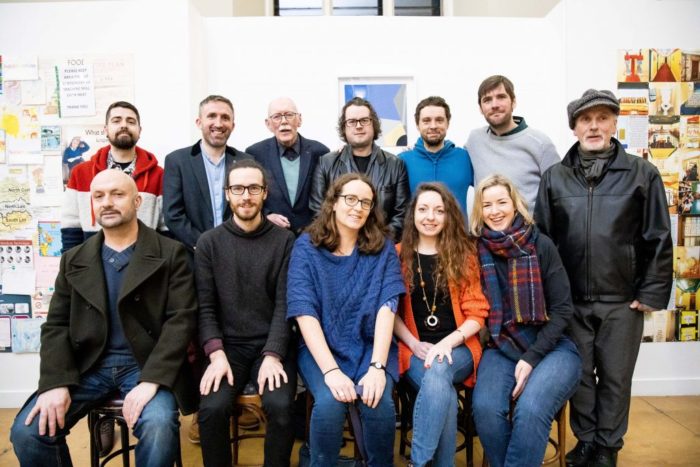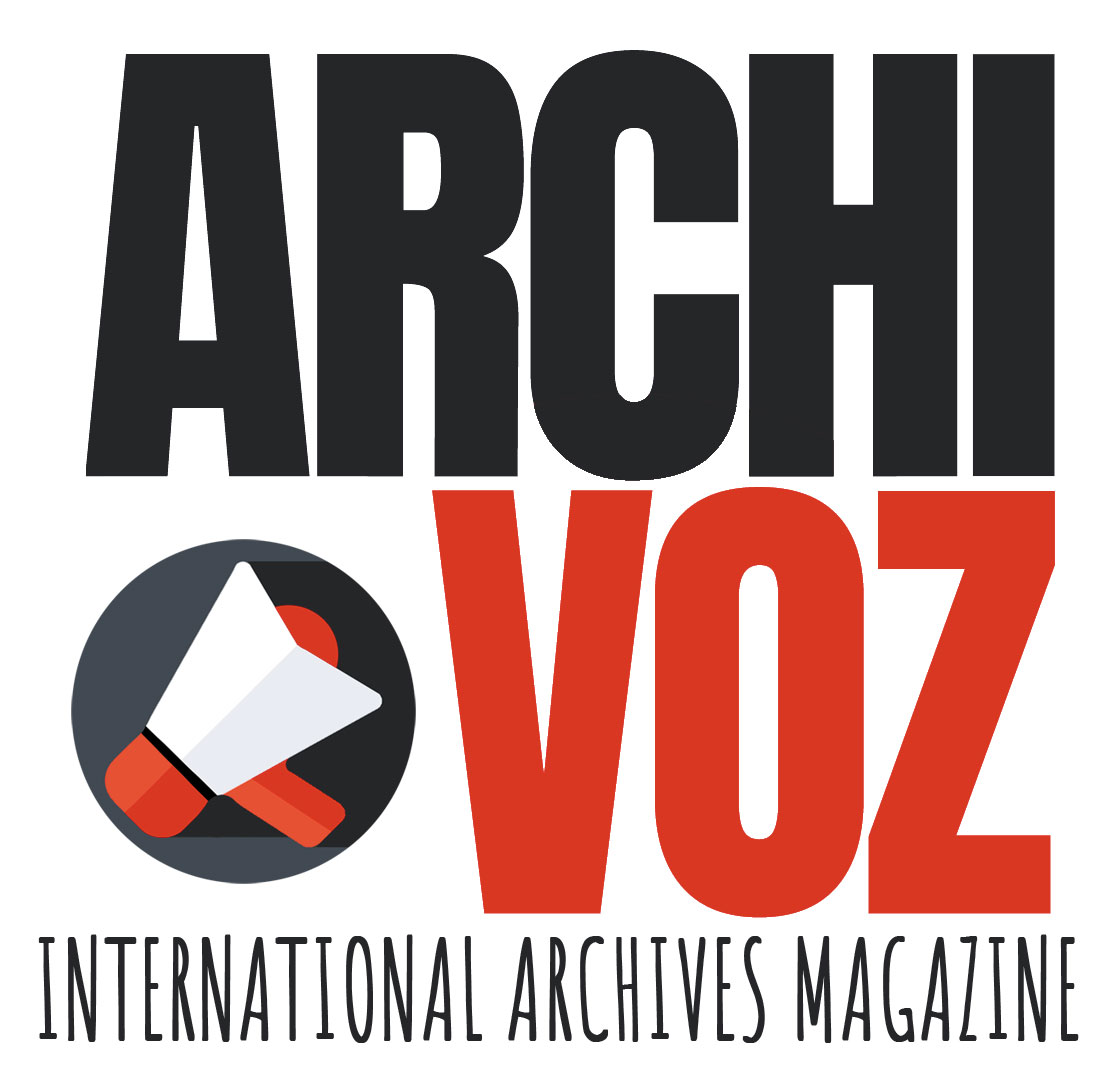Today, I’m speaking with oral historian Tomás Mac Conmara, project manager with the Cork Folklore Project in Cork, Ireland, about the importance of memory, the art of oral history collection, and the place of folklore in archival development.
(Archivoz) What was it that first interested you in oral history and the collection of memories?
(T.M.) That is very easy to answer. It was the voice of my old neighbour Jim. My understanding and appreciation of memory, in its broadest sense, is rooted in my townland. I was fortunate to grow up in a rural mountainside area called Ballymalone in the east of County Clare in the west of Ireland. The nearest house was a half mile away and belonged to an old man named Jim McNamara, born in 1908. From the age of eight I would visit Jim, sometimes to bring him messages, but mostly just to sit and listen to my old friend. Jim could not read or write. In his almost 100 years, he never ventured far from his local place and had little interaction with the modern world. Yet he remains, to this day, one of the most profoundly wise people I have ever spent time with. I have met intellectuals, analysts, and academics. Yet few have demonstrated the fundamental wisdom and shrewdness of my neighbour. I was twenty-six years old in January 2007 when my time with Jim came to an end. Our relationship instilled in me an appreciation of his generation and the value of listening and hearing, deeply. I know that across my country and across the globe, quiet, humble reservoirs of wisdom often remain silent, answers awaiting a question. I have been honoured to record hundreds of them as an oral historian and when I sit and listen to Jim’s generation, I am reminded that I remain a student; Ancora Imparo.
At the age of fourteen, I began to write notes, old Irish words, traditions and folklore in copybooks, that I described as ‘folklore of my place’; what I would perhaps have later called ‘Béaloideas’ (education from the mouth). Many of those words came from the mouth of my neighbour Jim. However, my father, Dan McNamara (1932-2019), loved the old Irish tradition of going ‘on cuaird’ (social visiting) and I would accompany him when he spent time with the friends of his youth. I would sit in the corner and make rough, barely legible notes. I still have those notebooks. At eighteen, I bought a mini-cassette recorder and began to take more seriously this duty I felt to record the memories of our past.
While always interested in the past, one period of history attracted me particularly. When I was about ten years of age, I discovered a revolver in my townland, dated from the Irish Revolutionary Period (1916-1923), and soon became captivated by that time. Before long I realised that to understand how such a weapon came to be concealed in my own landscape, I would have to look to older generations. Later, my discovery began to crystallise an emerging personal philosophical position about how the past is best understood. The Irish War of Independence, fought between a young volunteer force and a centuries old (British) empire, played out in my townland. The gun was tangible evidence of this struggle, concealed by time, nature and neglect. Memory and tradition exhibit a similar dynamic, often simply awaiting the question. The finding of a Webley revolver in the ruins of a derelict cottage in a remote rural townland presented a perfect metaphor for the research I subsequently undertook, outlined in both my PhD and my book, The Time of the Tans.
(Archivoz) How does the Cork Folklore Project attract that interest? Can you give us some background on the project and how you came to it?
(T.M.) In 2006, I began building an oral history project in my home county of Clare, a systematic effort to document the memories of Clare’s oldest citizens. In 2008, Cuimhneamh an Chláir (Irish for ‘Memories of Clare’) was established. From 2008 until 2014, I was the Project Co-ordinator for Cuimhneamh and led its development as Ireland’s first county-wide, volunteer-led oral history endeavour. During that time, I became more aware of the work of the Cork Folklore Project (CFP) and its impact both within the community and in academia. When the opportunity arose in 2016 to lead that project, I was delighted to take it. The CFP mirrored many of my own personal ambitions regarding the collection and dissemination of oral history and folklore. In addition, the challenge of taking on one of Ireland’s most prestigious folklore organisations was a huge attraction.
For many years, I had assisted in the establishment of folklore and oral history groups across Ireland. With some encouragement, I set up Mac Conmara Heritage Consulting in 2015, to offer professional services in oral history, folklore, and heritage management. I helped to develop projects like the Military Archives Oral History Project, chronicling the memory of the Irish Defence Forces, including overseas UN Missions to the Congo, Lebanon, and elsewhere. I also work with Waterways Ireland, Dublin Port, An Garda Síóchana and several local authorities in the development of large scale oral history and folklore collection and dissemination projects.
The CFP is a community research and oral history archive founded within the Department of Folklore & Ethnology at University College Cork in 1996. This year, we will celebrate our 25th anniversary. From the beginning, we have collected folklore and oral histories on an array of topics, documenting the everyday lives of the people of Cork and encouraging them to participate in the process themselves. Today, the CFP archive contains over 1,000 hours of sound and video recordings (with attendant transcriptions and archival metadata) and around 6,000 photographs. We are a model of long-term qualitative data collection, preservation and dissemination. Our research is rooted in and engages with the geographical, social and cultural communities of Cork. In addition to our highly regarded free annual journal, The Archive, we have a strong and consistent research output. We make every effort to open our archive to the community as a public resource. In 2017, I worked with project partners to move our operation to the North Cathedral in Cork City, to develop an Outreach Hub for people to engage with the project. In 2021, we were shortlisted for a National Good Causes Award, a further demonstration of our reputation across the country.
(Archivoz) How would you define “folklore”? How is this definition supported in the work of the Project?
(T.M.) Many who truly understand folklore would not consider a definition important. I personally believe that the more rigid the categorisation of the material we collect, the more limited our engagement with it. In over 600 personal interviews, I have never conducted one that did not touch on a multiplicity of topics: personal testimony, local tradition and history, folklore, among others. The oral historian, particularly those intensively dedicated to the craft, tends to encounter multiple ‘definable’ dimensions of experience within each recording. I believe there is a richness to the intersectionality of it all and that a recognition of nuance better reflects the realities of life. At the CFP, we largely accept the interpretation offered by Irish folklorist and ethnologist Kevin Danaher, who described folklore as ‘the sayings and doings of ordinary people.’ This definition opens up a wide expanse of experience, knowledge, and insight.
(Archivoz) One of my favorite features on your website is the way in which you’ve mapped oral histories on to a map of the city. Why does this this sort of spatial representation matter? What value do you think it adds to the memories collected?
(T.M.) The CFP Memory Map is one of our most popular methods of engaging the public, so it is clear that spatial representation of memory is effective. Our memory is often hardwired to the spatial. In order to strengthen the connection between the people of Cork and the landscape of memory around them, spatial representation of story and memory was critical. This allows people to relate memory to identifiable places and in turn triggers further memories which generate multiple connections to and interpretations of a singular place. It adds value both for the interviewee and the interviewer. The ability to explore a moment of memory in the context of a recognisable landscape is a great opportunity. It allows us to open the lens on both the present and the past and track changes through the eyes of those familiar with the landscape and gain fresh insight from those seeing it for the first time. For example, in 2005, we undertook a series of recordings with immigrants to the city, which infused our collection with insights both of those reflecting on their place of birth and of those getting to know their new home in Cork.
(Archivoz) This last year, we’ve all seen the world change around us due to COVID-19, and at the Project you’ve made an effort to capture those changes in the COVID-19 collection. As someone steeped in the effects and aftereffects of traumatic experiences in Irish history, how do you think this latest one fits into the bigger picture? Are you planning an oral history project focused specifically on this topic?
(T.M.) For me, contemporary Western society has become increasingly existentalist in character. As a result, we hear a lot about the ‘unprecedented nature’ of the COVID-19 pandemic, without much reflection on other traumatic events in the not too distant past. The pandemic is, of course, unprecedented in its specific nature, rapidity of transmission, and universality. However, as a historian of modern Ireland, I must take into account the experiences of previous generations who lived through similarly life-altering periods, like the Irish War of Independence, the Irish Civil War, the Economic War (1932-39), the ‘Emergency’ (World War II), and more. In broader context, the impact of COVID-19 on daily life seems somewhat different. Nevertheless, as an observer of society and people, one cannot ignore the gravity and significance of the current pandemic. Therefore, in 2020, the CFP launched Chronicles of COVID-19. The project was established in March 2020, led by my colleague Dr Cliona O’Carroll, to document the sights, sounds, everyday actions, thoughts and conversations of the pandemic, so that our community has an enduring record of these times. We invited contributors to fill out an online questionnaire and share their own experiences or those of their neighbours, family or community. We also encouraged the submission of photographs, audio and video. The material will be presented both as a research resource and an online exhibition.
(Archivoz) In a recent presentation on the Irish War of Independence, you noted that “everyone’s a story-teller in their own way.” I would add to this the idea that every person is in themselves an archive. Putting these two ideas together, it is clear that not only is each person a storyteller, but that those stories matter and are worth preserving as historical artifacts. What are your thoughts on this?
(T.M.) After over twenty years involved in the collection, preservation and use of memory, I am convinced that there is value to everyone’s story in its own right. Furthermore, when combined with others’ stories, they allow us to form patterns and discern the relationships between the individual and the collective. I remain convinced of the pedagogic and intellectual capacities of many older people, and the positive impact they exert on future generations. Some suggest that the relatively homogenous nature of early to mid-twentieth century Irish society implies an elderly population presenting a sameness of experience. I reject this entirely and suggest that this impression is based on a failure to look beyond a uniform exterior to see the profound individuality inside. The experience of each person leaves behind a unique landscape of existence. In a life story interview, a subject’s interiority can be accessed only when the intention is to seek out their true identity, not simply to generate a biography. This allows the collector to travel to sometimes rarely visited districts of a person’s memory and unearth great treasures, in gentle cooperation with the custodian.

Paddy Gleeson was Ireland’s oldest man when he died in 2010 at the age of 106. He was interviewed extensively by Tomás Mac Conmara as part of his research into the Irish War of Independence.
My ambition as a historian is to cultivate in myself an understanding of the past, not just accumulate information or knowledge. The retention of vast amounts of information, in my experience, does not on its own necessarily correlate to an understanding. As an oral historian, I must understand both people and the past. The opportunity to place ourselves within the fold of memory, which takes us to the human experience of our past, is rapidly fading. Your question relates specifically to a lecture I gave recently on the memory of the Irish War of Independence. My research in that area advances the notion that to understand a war which occurred and was understood at such an inherently local level, the historian must return to the level of the parish, village, townland, and street. In the same way, when exploring the history of Brazil, one must go to the favela, or in the Basque Country, the udalerriak. The historian must metaphorically get down on his or her hands and knees to find the fragments of memory and history where it occurred and assemble from those remains a deeper understanding of the past. In the local, echoes can be found of events only listed in conventional archival records. A work of history that excludes the voices closest to those experiences, or that fails to recognise in memory the illuminating traces of that past, can only result in an incomplete narrative.
– Images by permission of Tomás Mac Conmara.
Interview conducted by: Vance Woods





